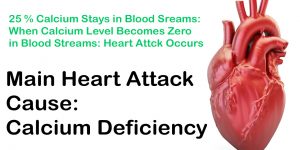May 3, 2017 at 5:33 pm
Humans, like all animals, use holozoic nutrition, which consists of these stages:
| ingestion |
– taking large pieces of food into the body |
| digestion |
– breaking down the food by mechanical and chemical means |
| absorption |
– taking up the soluble digestion products into the body’s cells |
| assimilation |
– using the absorbed materials |
| egestion |
– eliminating the undigested material |
Note
| Egestion is elimination of material from the body caviry |
| Excretion is elimination of substances from within body cells |
The human digestive system is well adapted to all of these functions. It comprises a long tube, the alimentary canal (digestive tract or simply gut) that runs from the mouth to the anus, together with a number of associated glands. The digestive systems’ made up of different tissues doing different jobs. The lining wall of the alimentary canal appears different in different parts of the gut, reflecting their different roles, but always has the same basic layers:

| The mucosa |
Secretes digestive juices and absorbs digested food. It is often folded to increase its surface area. On the inside, next to the lumen (the space inside the gut) is a thin layer of cells called the epithelium. Mucosa cells are constantly worn away by the friction of food moving through the gut, so are constantly being replaced. |
| The submucosa |
contains blood vessels, lymph vessels and nerves to control the muscles. It may also contain secretory glands. |
| The muscle layer |
Made of smooth muscle, under involuntary control. It can be subdivided into circular muscle (which squeezes the gut when it contracts) and longitudinal muscle (which shortens the gut when it contracts). The combination of these two muscles allows a variety of different movements. |
| The serosa |
A tough layer of connective tissue that holds the gut together, and attaches it to the abdomen. |
 Parts of the Alimentary Canal
Parts of the Alimentary Canal
1. Mouth (Buccal cavity)
- The teeth, tongue and chewing action break up the food physically which increases surface area, and they form it into a ball or bolus. The salivary glands secrete saliva, which contains water to dissolve soluble substances, mucus for lubrication, lysozymes to kill bacteria and amylase to digest starch. The food bolus is swallowed by an involuntary reflex action through the pharynx (the back of the mouth). During swallowing the trachea is blocked off by the epiglottis to stop food entering the lungs.
2. Oesophagus (gullet)
- This is a simple tube through the thorax, which connects the mouth to the rest of the gut. No digestion takes place. There is a thin epithelium, no villi, a few glands secreting mucus, and a thick muscle layer, which propels the food by peristalsis. This is a wave of circular muscle contraction, which passes down the oesophagus and is completely involuntary. The oesophagus is a soft tube that can be closed, unlike the trachea, which is a hard tube, held open by rings of cartilage.
3. Stomach
This is an expandable bag where the food is stored for up to a few hours. There are three layers of muscle to churn the food into a liquid called chyme. This is gradually released in to the small intestine by a sphincter, a region of thick circular muscle that acts as a valve. The mucosa of the stomach wall has no villi, but numerous gastric pits (104 cm-2) leading to gastric glands in the mucosa layer. These secrete gastric juice, which contains: hydrochloric acid (pH 1) to kill bacteria (the acid does not help digestion, in fact it hinders it by denaturing most enzymes); mucus to lubricate the food and to line the epithelium to protect it from the acid; and the enzymes pepsin and rennin to digest proteins.
4. Small Intestine
This is about 6.5 m long, and can be divided into three sections:
The duodenum (30 cm long). Although this is short, almost all the digestion takes place here, due to two secretions: Pancreatic juice, secreted by the pancreas through the pancreatic duct. This contains numerous carbohydrase, protease and lipase enzymes. Bile, secreted by the liver, stored in the gall bladder, and released through the bile duct into the duodenum. Bile contains bile salts to aid lipid digestion, and the alkali sodium hydrogen carbonate to neutralise the stomach acid. Without this, the pancreatic enzymes would not work. The bile duct and the pancreatic duct join just before they enter the duodenum. The mucosa of the duodenum has few villi, since there is no absorption, but the submucosa contains glands secreting mucus and sodium hydrogen carbonate.
The jejunum (2 m long) and the ileum (4 m long). These two are similar in humans, and are the site of final digestion and all absorption. There are numerous glands in the mucosa and submucosa secreting enzymes, mucus and sodium hydrogen carbonate.
The internal surface area is increased enormously by three levels of folding: large folds of the mucosa, villi, and microvilli. Don’t confuse these: villi are large structures composed of many cells that can clearly be seen with a light microscope, while microvilli are small sub-cellular structures formed by the folding of the plasma membrane of individual cells. Microvilli can only be seen clearly with an electron microscope, and appear as a fuzzy brush border under the light microscope.
 Circular and longitudinal muscles move the liquid food by peristalsis.
Circular and longitudinal muscles move the liquid food by peristalsis.
5. Large Intestine
This comprises the caecum, appendix, colon and rectum. Food can spend 36 hours in the large intestine (mind you that’s if your pretty constipated!), while water is absorbed to form semi-solid faeces. The mucosa contains villi but no microvilli, and there are numerous glands secreting mucus. Faeces is made up of cellulose, cholesterol, bile, mucus, mucosa cells (250g of cells are lost each day), bacteria and water, and is released by the anal sphincter. This is a rare example of an involuntary muscle that we can learn to control (during potty training).
Chemistry of Digestion
1. Digestion of Carbohydrates
The most abundant carbohydrate in the human diet is starch (in bread, potatoes, cereal, rice, pasta, biscuits, cake, etc), but there may also be a lot of sugar (mainly sucrose) and some glycogen (in meat).
- Salivary amylase starts the digestion of starch. Very little digestion actually takes place, since amylase is quickly denatured in the stomach, but is does help to clean the mouth and reduce bacterial infection.
- Pancreatic amylase digests all the remaining starch in the duodenum. Amylase digests starch molecules from the ends of the chains in two-glucose units, forming the disaccharide maltose. Glycogen is also digested here.
- Disaccharidases in the membrane of the ileum enzymes attached to the epithelial cells complete the digestion of disaccharides to monosaccharides. This includes maltose from starch digestion as well as any sucrose and lactose in the diet. There are three important disaccharidase enzymes:
- The monsaccharides (glucose, fructose and galactose) are absorbed by active transport into the epithelial cells of the ileum, whence they diffuse into the blood capillaries of the villi. Active transport requires energy in the form of ATP, but it allows very rapid absorption, even against a concentration gradient. The membrane-bound disaccharidases and the monosaccharide pumps are often closely associated:

- The carbohydrates that make up plant fibres (cellulose, hemicellulose, lignin, etc) cannot be digested, so pass through the digestive system as fibre.
2. Digestion of Proteins
- Rennin (in gastric juice) converts the soluble milk protein caesin into its insoluble calcium salt. This keeps in the stomach longer so that pepsin can digest it. Rennin is normally only produced by infant mammals. It is used commercially to make cheese.
- Pepsin (in gastric juice) digests proteins to peptides, 6-12 amino acids long. Pepsin is an endopeptidase, which means it hydrolyses peptide bonds in the middle of a polypeptide chain. It is unusual in that it has an optimum pH of about 2 and stops working at neutral pH.
- Pancreatic endopeptidases continue to digest proteins and peptides to short peptides in the duodenum. Different endopeptidase enzymes cut at different places on a peptide chain because they have different target amino acid sequences, so this is an efficient way to cut a long chain up into many short fragments, and it provides many free ends for the next enzymes to work on.
- Exopeptidases in the membrane of the ileum epithelial cells complete the digestion of the short peptides to individual amino acids. Exopeptidases remove amino acids one by one from the ends of peptide chains. Carboxypeptidases work from the C-terminal end, aminopeptidases work from the N-terminal end, and dipeptidases cut dipeptides in half.
- The amino acids are absorbed by active transport into the epithelial cells of the ileum, whence they diffuse into the blood capillaries of the villi. Again, the membrane-bound peptidases and the amino acid transporters are closely associated.
- Protease enzymes are potentially dangerous because they can break down other enzymes (including themselves!) and other proteins in cells. To prevent this they are synthesised in the RER of their secretory cells as inactive forms, called zymogens. These are quite safe inside cells, and the enzymes are only activated in the lumen of the intestine when they are required.
- Pepsin is synthesised as inactive pepsinogen, and activated by the acid in the stomach
- Rennin is synthesised as inactive prorennin, and activated by pepsin in the stomach
- The pancreatic exopeptidases are activated by specific enzymes in the duodenum
- The membrane-bound peptidase enzymes do not have this problem since they are fixed, so cannot come into contact with cell proteins.
- The lining of mucus between the stomach wall and the food also protects the cells from the protease enzymes once they are activated.
3. Digestion of Triglycerides
- Fats are emulsified by bile salts to form small oil droplets called micelles, which have a large surface area.
- Pancreatic lipase enzymes digest triglycerides to fatty acids and glycerol in the duodenum.
- Fatty acids and glycerol are lipid soluble and diffuse across the membrane (by lipid diffusion) into the epithelial cells of the villi in the ileum.
- In the epithelial cells of the ileum triglycerides are re-synthesised (!) and combine with proteins to form tiny lipoprotein particles called chylomicrons.
- The chylomicrons diffuse into the lacteal – the lymph vessel inside each villus. The emulsified fatty droplets give lymph its milky colour, hence name lacteal.
- The chylomicrons are carried through the lymphatic system to enter the bloodstream at the vena cava, and are then carried in the blood to all parts of the body. They are stored as triglycerides in adipose (fat) tissue.
- Fats are not properly broken down until they used for respiration in liver or muscle cells.
4. Digestion of Nucleic acids
- Pancreatic nuclease enzymes digest nucleic acids (DNA and RNA) to nucleotides in the duodenum.
- Membrane-bound nucleotidase enzymes in the epithelial cells of the ileum digest the nucleotides to sugar, base and phosphate, which are absorbed.
5. Other substances
- Many substances in the diet are composed of small molecules that need little or no digestion. These include sugars, mineral ions, vitamins and water. These are absorbed by different transport mechanisms:
- Cholesterol and the fat-soluble vitamins (A, D, E, K) are absorbed into the epithelial cells of the ileum by lipid diffusion
- Mineral ions and water-soluble vitamins are absorbed by passive transport in the ileum
- Dietary monosaccharides are absorbed by active transport in the ileum
- Water is absorbed by osmosis in the ileum and colon.
Digestion in Fungi
Fungi are not consumers like animals, but are either saprophytes (decomposers), or pathogens. They therefore use saprophytic nutrition, which means they do not ingest their food, but use extracellular digestion. Fungi secrete digestive enzymes (carbohydrases, proteases and lipases) into the material that surrounds them and then absorb the soluble products (sugars, amino acids, etc).
 Fungi are usually composed of long thin threads called hyphae. These grow quickly, penetrating dead material such as leaves, as well as growing underground throughout soil. The cotton wool appearance of bread mould growing on decaying bread is typical of a mass of hyphae, called a fungal mycelium. These thin hyphae give fungi a large surface area to volume ratio. They contain many nuclei, since they are formed from the fusion of many cells.
Fungi are usually composed of long thin threads called hyphae. These grow quickly, penetrating dead material such as leaves, as well as growing underground throughout soil. The cotton wool appearance of bread mould growing on decaying bread is typical of a mass of hyphae, called a fungal mycelium. These thin hyphae give fungi a large surface area to volume ratio. They contain many nuclei, since they are formed from the fusion of many cells. (
more on extracellular digestion)














